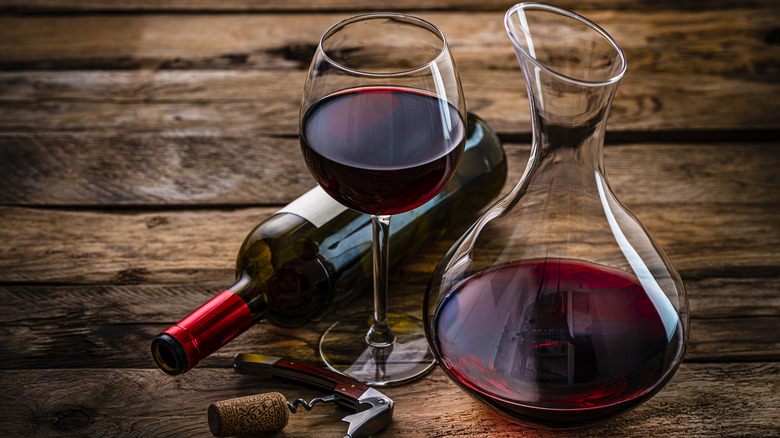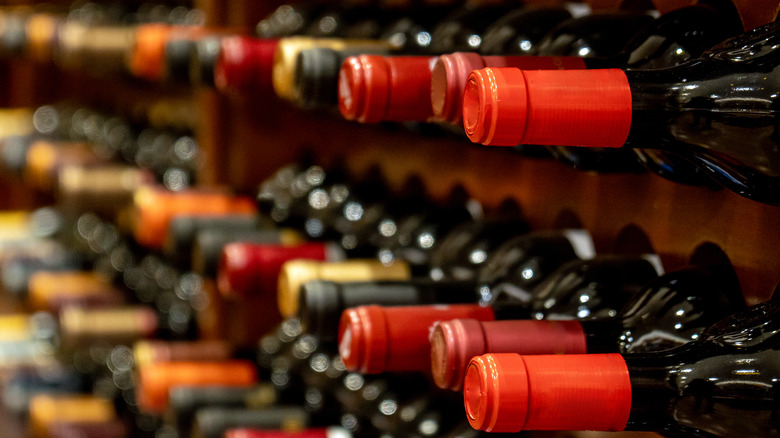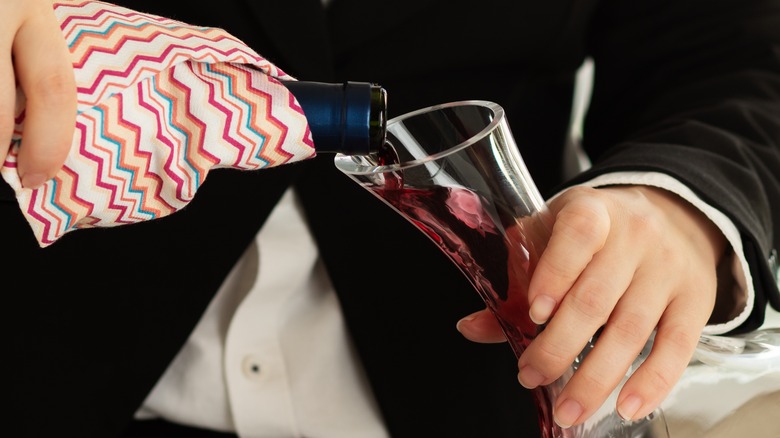The Best Way To Store An Open Bottle Of Red Wine
We may receive a commission on purchases made from links.
After savoring a glass of red wine, it's normal to wonder if it will remain as flavorful and complex when it's time to polish off the bottle. Once opened, red wine can spoil rather quickly, and while there are plenty of tips and tricks online for getting the lengthiest shelf life, it's not obvious which will work best.
To find that out, Foodie reached out to expert Gabriel Corbett, sommelier of the two Michelin-starred restaurant, JÔNT. He knows wine better than most, and through his expertise, we've discovered a couple of key factors that contribute to red wine staying fresh and tempting after you've popped the cork — which can be accomplished without a corkscrew if necessary.
One of the first points he clued us into was how storage temperature is crucial. The difference between leaving a dark red out at room temperature and cooling it down can determine whether you'll smile or cringe the next time it hits your lips.
Ideal conditions for storing wine
While it's often said red wines should be enjoyed at room temperature, this isn't necessarily the case. "Room temperature" can mean different things to people in various regions around the country. According to Corbett, the optimal condition for storing wine is 55 to 56 degrees Fahrenheit. This applies to the unopened category as well as open bottles being saved for later. When served at higher temperatures it can be overly bitter, ruining the experience of a rich red that would otherwise impart all kinds of dynamic flavors with the first sip.
If you just left it out for a few hours, you could utilize a water hack that chills wine fast, but for longer term storage a wine chiller or cellar is ideal once the bottle is uncorked. Otherwise, the refrigerator is a good option to get to that range — not ambient fridge temperature, which is around 40 degrees Fahrenheit.
Before it gets opened (the first time), Corbett says that laying the bottle down horizontally is the best practice. The reason, he states, is because "You want to keep the cork saturated, thus minimizing exchange of air through the cork." After removing the cork, he indicates it doesn't matter as much whether it remains vertical or horizontal, though storing the bottle upright could slightly help to minimize oxidation. This goes to his next point, which is that the vessel containing the wine is just as important as keeping it in an appropriately cooled space.
Preventing oxidation
Once uncorked, wine begins to oxidize, and this is the main reason it spoils so quickly. Our certified sommelier explains leftover vino stores best in its original bottle. But for the times you tossed it, Corbett explains, "Pouring the wine into another vessel won't really hurt the wine, but if you were to store it in, say, Tupperware, the wine is going to be exposed to much more oxygen; the surface area the wine is being exposed to [will be] much greater than if it were stored in a bottle."
There are several options available online to assist in this, like a sealable wine carafe. This model not only prevents spoilage with a stopper, but minimizes oxidation with a float that adjusts to how much leftover wine you have. You can extend the quality of your wine for up to seven days with such a container.
For a different, and more affordable option, consider forcing the oxygen out of the bottle using the Private Preserve Wine Preservation System, which involves injecting a non-toxic blend of carbon dioxide, nitrogen, and argon. Simply insert the nozzle of the canister into your original wine bottle, and re-cork it after a few spurts. Of course, if the glass you drank wasn't a vintage you care to sip again, you can always store it in the freezer as cubes to incorporate into your next culinary creation.


